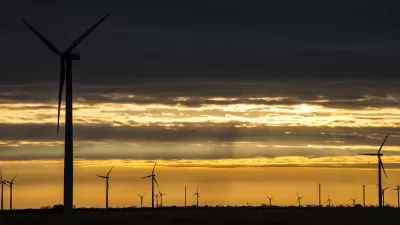On June 2, one of the most important and far-reaching programs to reduce carbon emissions will be unveiled by the EPA: a rule to require reduction of carbon emissions from existing power plants using a number of options, including cap and trade.
The largest single source of carbon emissions in the U.S. is from power plants, responsible for 38% according to the EPA pie chart, followed by transportation at 32%. By far, coal power plants, which produce 39% of the nation's electricity (see Wall Street Journal bar chart) are the single biggest emitters, accounting for "24.5% of total U.S. greenhouse gas emissions in 2012," according to the Center for Climate and Energy Solutions, so the rule is anticipated to have a disproportionate impact on them.
Obama's proposed rule is designed to reduce those emissions, though the details, including the percentage reduction, and "(t)he baseline year against which those reductions are calculated", may have to await till the rule is released on Monday, June 2, writes Amy Harder. But we do know that the rule will be flexible in terms of allowing different strategies to reach the desired reductions.
Adds Coral Davenport of The New York Times in an earlier article, the rule "is certain to be a divisive but potentially historic centerpiece of President Obama’s climate change legacy."
The rule will be "designed to give states, which will administer the regulations, flexibility to meet the benchmarks, as opposed to placing emissions limits on individual plants, according to people familiar with the Environmental Protection Agency's work on the rule," Harder writes.
Central to the strategy of flexibility: the option to include a cap-and-trade component where a limit is set on emissions and companies can trade allowances or credits for emissions as a way of staying under different benchmarks the EPA sets for each state.
According to former EPA Administrator Carol Browner, "the rule would likely allow states and companies to join existing trading programs, which would be good news for the California program and the Northeast states' program, the Regional Greenhouse Gas Initiative (RGGI).
Other strategies were not discussed in the article other than mentioning the use of renewable energy. The approach met a positive reception from at least one electric utility, American Electric Power Co., "whose generating capacity throughout the Midwest is roughly 60% coal," writes Harder.
"Any approach that includes flexibility, such as cap and trade, would be better than a prescriptive limit on unit emissions," said AEP spokeswoman Melissa McHenry. "But we'd have to see the approach before we could say whether or not we'd support it."
Another strategy, not likely to be received well by the coal industry, is mentioned in Marketplace by their sustainability reporter, Dan Weissmann. "One of the most efficient ways to hit a target: Shut down older, heavily-polluting coal-burning plants," he writes (and states in audio version).
"EPA is scheduled to complete the rule by June 2015, and states must submit their implementation plans the following year, according to the timeline Mr. Obama set last summer," adds Harder.
FULL STORY: EPA Set to Unveil Climate Proposal

Maui's Vacation Rental Debate Turns Ugly
Verbal attacks, misinformation campaigns and fistfights plague a high-stakes debate to convert thousands of vacation rentals into long-term housing.

Planetizen Federal Action Tracker
A weekly monitor of how Trump’s orders and actions are impacting planners and planning in America.

In Urban Planning, AI Prompting Could be the New Design Thinking
Creativity has long been key to great urban design. What if we see AI as our new creative partner?

Cal Fire Chatbot Fails to Answer Basic Questions
An AI chatbot designed to provide information about wildfires can’t answer questions about evacuation orders, among other problems.

What Happens if Trump Kills Section 8?
The Trump admin aims to slash federal rental aid by nearly half and shift distribution to states. Experts warn this could spike homelessness and destabilize communities nationwide.

Sean Duffy Targets Rainbow Crosswalks in Road Safety Efforts
Despite evidence that colorful crosswalks actually improve intersection safety — and the lack of almost any crosswalks at all on the nation’s most dangerous arterial roads — U.S. Transportation Secretary Duffy is calling on states to remove them.
Urban Design for Planners 1: Software Tools
This six-course series explores essential urban design concepts using open source software and equips planners with the tools they need to participate fully in the urban design process.
Planning for Universal Design
Learn the tools for implementing Universal Design in planning regulations.
Appalachian Highlands Housing Partners
Gallatin County Department of Planning & Community Development
Heyer Gruel & Associates PA
Mpact (founded as Rail~Volution)
City of Camden Redevelopment Agency
City of Astoria
City of Portland
City of Laramie



























